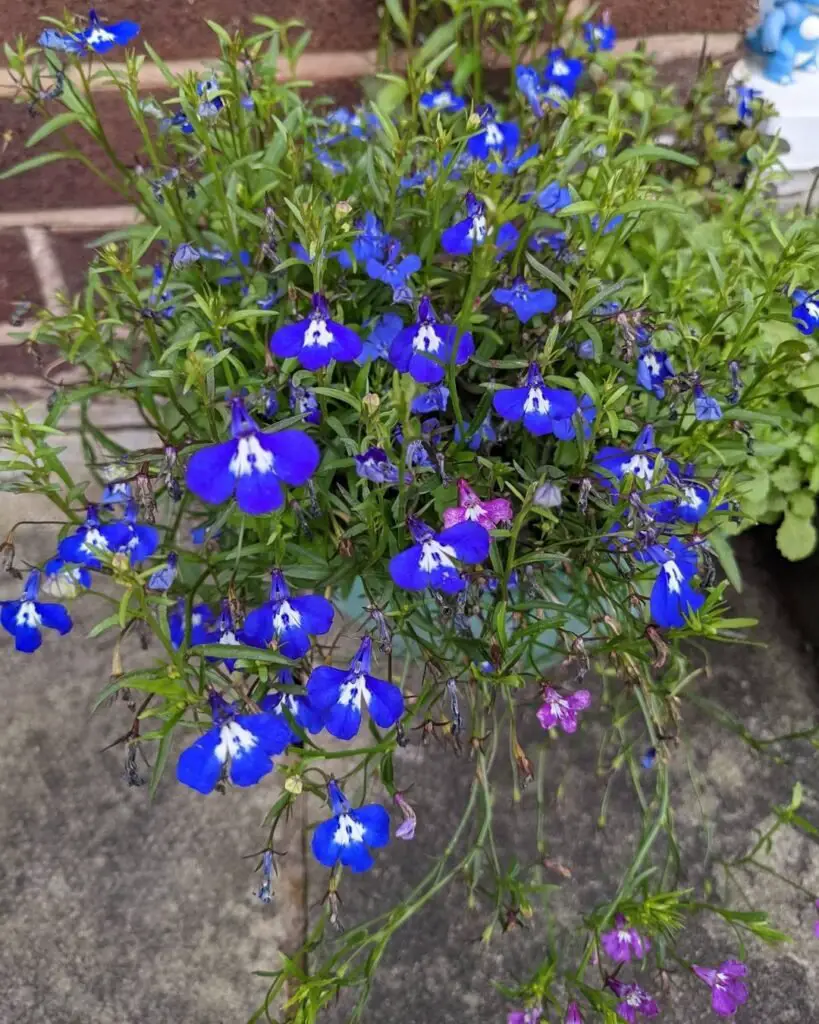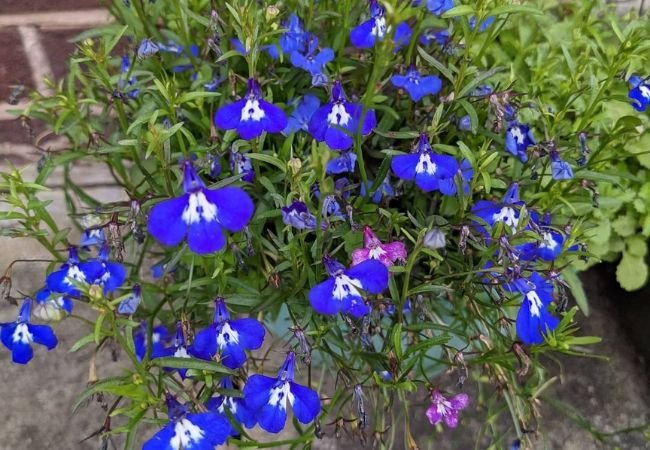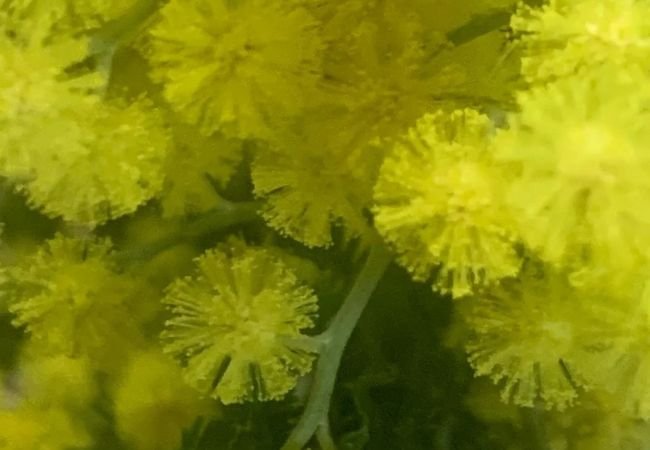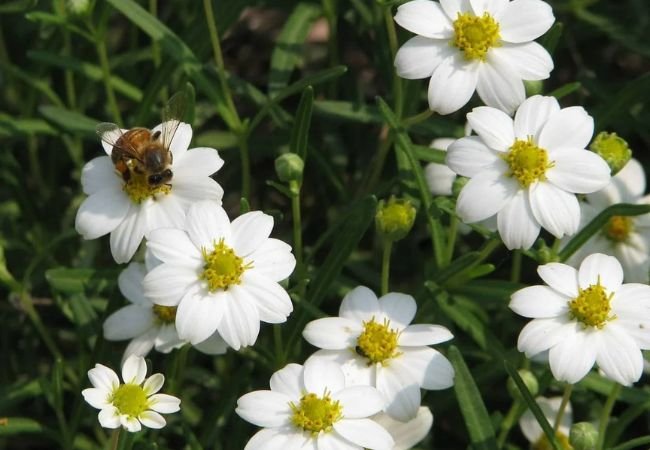Discover the charm of Lobelia Flowers. Learn how to grow and care for these vibrant, low-maintenance plants that add a splash of color to gardens, hanging baskets and containers.
Have you ever seen a cascade of tiny, bright blue flowers spilling out of a hanging basket? That’s likely Lobelia, a versatile and colorful plant that’s becoming increasingly popular in gardens across the USA. Let’s explore why Lobelia might be the perfect addition to your outdoor space.
Here’s a detailed chart for Lobelia flowers:
| Category | Information |
|---|---|
| Botanical name | Lobelia erinus (Annual Lobelia), Lobelia cardinalis (Perennial Lobelia) |
| Common name | Lobelia |
| Plant type | Annual or perennial |
| Hardiness zone | Zones 10-11 (annual), Zones 2-9 (perennial) |
| Sun exposure | Full sun to part shade |
| Soil type | Moist, well-drained soil |
| Watering | Regular watering, keep soil moist |
| Growth habit | Trailing, upright |
| Height/Spread | 6-12 inches tall, 6-12 inches wide (annual), 2-4 feet tall, 1-2 feet wide (perennial) |
| Special features | Vibrant blue, purple, or white flowers, attracts pollinators |
What is Lobelia?

Lobelia is a genus of flowering plants that includes both annual and perennial varieties. While native to many parts of the world, several species have become favorites in American gardens.
Key Features
- Small, delicate flowers in shades of blue, purple, pink or white
- Some varieties have a trailing habit, others are more upright
- Blooms from spring through fall in many areas
- Comes in both annual and perennial varieties
Why Gardeners Love Lobelia
- Vibrant Color Lobelia’s intense blue flowers are especially prized, as true blue is rare in the plant world.
- Versatility It can be used in hanging baskets, containers or as a garden border.
- Long Blooming Season With proper care, Lobelia can bloom for months.
- Low Maintenance Many varieties of Lobelia are easy to grow and care for.
How to Grow Lobelia
Planting:
- Choose a spot with full sun to partial shade
- Plant in spring after the last frost
- Space plants 4-6 inches apart
- Use well-draining, fertile soil
Care Tips:
- Water regularly, keeping soil moist but not waterlogged
- Pinch back growth to encourage bushiness
- Fertilize monthly with a balanced, water-soluble fertilizer
- Deadhead spent blooms to prolong flowering
For more detailed growing instructions, check out this guide from the University of Wisconsin-Madison Extension.
Uses for Lobelia
Garden Design Lobelia works well in various garden styles:
- Cottage gardens
- Rock gardens
- Container gardens
- Hanging baskets
- Edging Use upright varieties to create colorful borders along paths or flower beds.
- Groundcover Some spreading varieties make excellent groundcover in the right conditions.
- Attracting Wildlife Lobelia can attract hummingbirds and butterflies to your garden.
Interesting Facts About Lobelia
- Native American Use Some Native American tribes used certain Lobelia species for medicinal purposes.
- Name Origin The genus is named after Matthias de l’Obel, a 16th-century Flemish botanist.
- Cardinal Flower The red Lobelia cardinalis, also known as Cardinal Flower, is a native North American species.
For more information on native plants, visit the Lady Bird Johnson Wildflower Center.
Types of Lobelia
There are many types of Lobelia, but some popular ones for gardens include:
- Trailing Lobelia (Lobelia erinus): Often used in hanging baskets and window boxes.
- Cardinal Flower (Lobelia cardinalis): A tall, red-flowered native species that attracts hummingbirds.
- Great Blue Lobelia (Lobelia siphilitica): Another native species with blue flowers, good for moist areas.
Potential Challenges
While Lobelia is generally easy to grow, be aware of these potential issues:
- Heat Sensitivity Some varieties may stop blooming during the hottest part of summer. Provide afternoon shade in hot climates.
- Overwatering While Lobelia likes moist soil, it can suffer from root rot if overwatered.
- Pests Watch for aphids and spider mites. Use appropriate integrated pest management techniques if needed.
Lobelia is a versatile and colorful plant that can add a splash of vibrant color to any garden, container or hanging basket. Its long blooming season, low maintenance needs and ability to attract wildlife make it a valuable addition to many landscapes.
Remember, successful gardening is about choosing plants that suit your local climate and personal preferences. With its wide range of varieties and adaptability, Lobelia can be a great choice for many gardeners across the USA.
As you plan your garden, consider adding Lobelia for its striking colors and versatile growth habits. Whether you’re looking to create stunning hanging baskets, colorful borders or attract hummingbirds to your yard, Lobelia offers something for everyone. With proper care, you’ll be enjoying these delightful blooms throughout the growing season.
For more gardening tips and plant care guides, visit usagardenhub.com.






